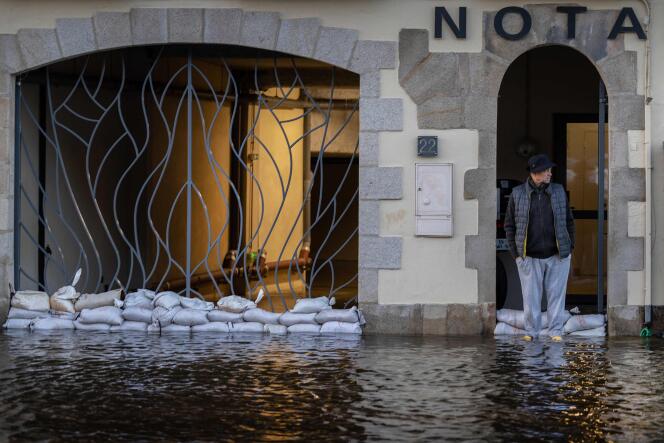

Even before Ciaran’s arrival on the Atlantic coast, expected on the night of the 1uh On November 2, storm Céline left its mark in Charente-Maritime. Saturday October 28, the strong southwest wind, combined with high tidal coefficients, caused flooding from the Gironde estuary to the north of the department. Three families had to be relocated to Nieul-sur-Mer, a neighboring town to La Rochelle, oyster farming establishments were damaged in La Tremblade, a breakwater in Portes-en-Ré…
The new storm which should sweep the north-western quarter of Francequalified for “weather bomb” by forecasters, was preceded by numerous calls for vigilance, both from the prefecture and the most exposed municipalities, in a department hit hard twice, by Martin in 1999 (thirteen deaths) and Xynthia in 2010 (twelve dead). The “culture of risk” was instilled by the force of natural elements.
The “concreteization” of the coastline called into question
“First of all, there is an incredible culture of forgetting in Franceremarks Patrice Raffarin, mayor of Rivedoux-Plage, on the Île de Ré, and vice-president of the department responsible for coastal protection. In 2010, we “discovered” this type of event, which had nevertheless been repeated in the past. The old dikes, some of which date from the 17th centurye century, were no longer maintained. »
After the passage of Xynthia, the Charente-Maritime departmental council decided to strengthen the defense of its 470 kilometers of coastline, the longest coastline in New Aquitaine, by devoting 230 million euros to a “Digues plan” . In 2023, 130 million have already been spent, distributed across eight flood prevention action programs (PAPI) in the islands and on the continent, and twenty-one containment systems have been delivered. “Lessons from Storm Xynthiaadds Patrice Raffarin, have enabled the department to equip itself with a cutting-edge engineering service on issues of marine submersion and coastal protection. »
The “concreteization” of the coastline in the face of onslaughts from the ocean has, however, been called into question, in particular by Virginie Duvat, geographer at the University of La Rochelle and member of the Intergovernmental Group of Experts on Climate Change (IPCC). , which denounces a “maladaptation”. However, the residents of Charron have been waiting for “their” northern dike for more than ten years, whose studies have only just begun.
You have 55% of this article left to read. The rest is reserved for subscribers.
Similar articles











